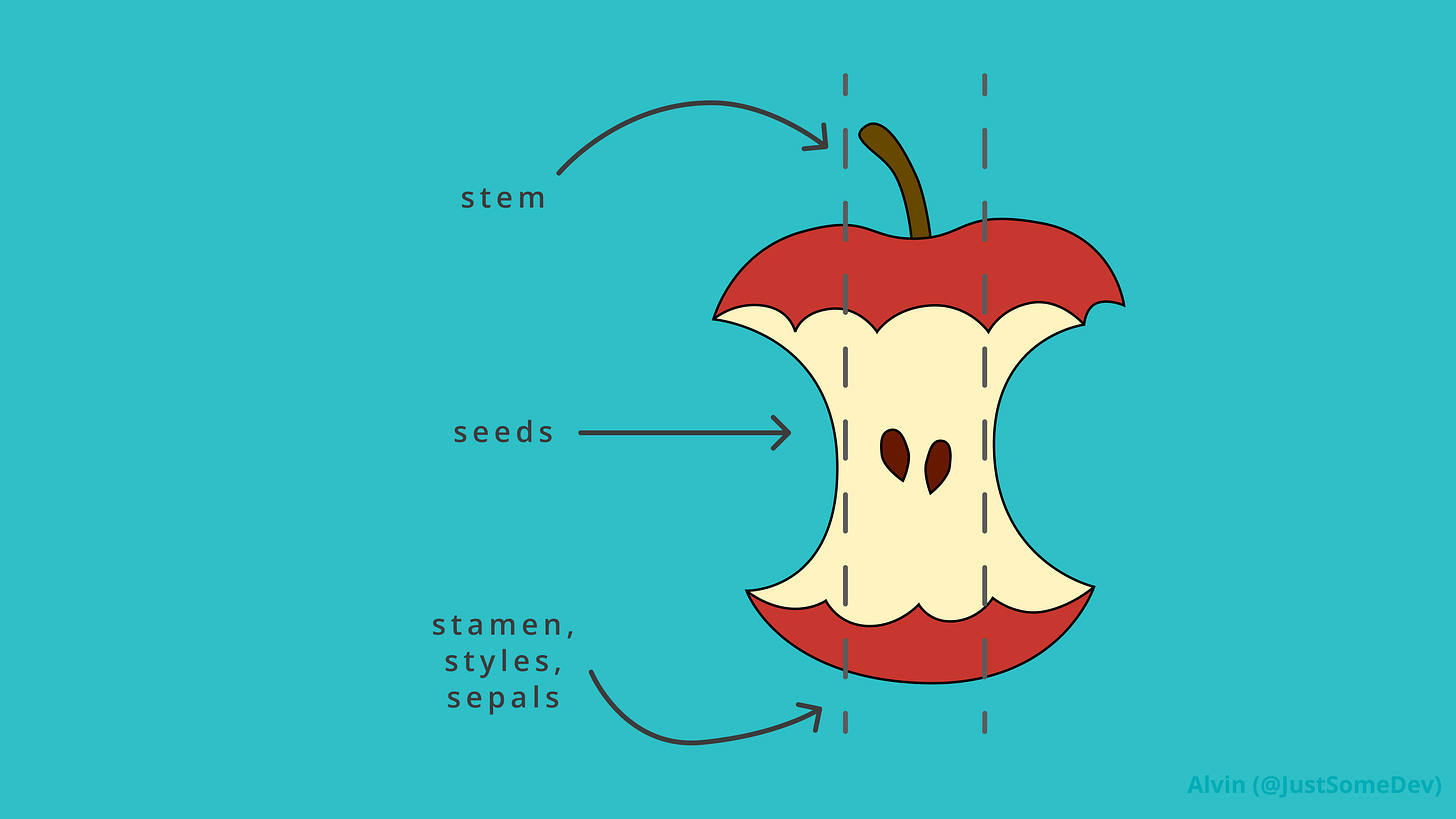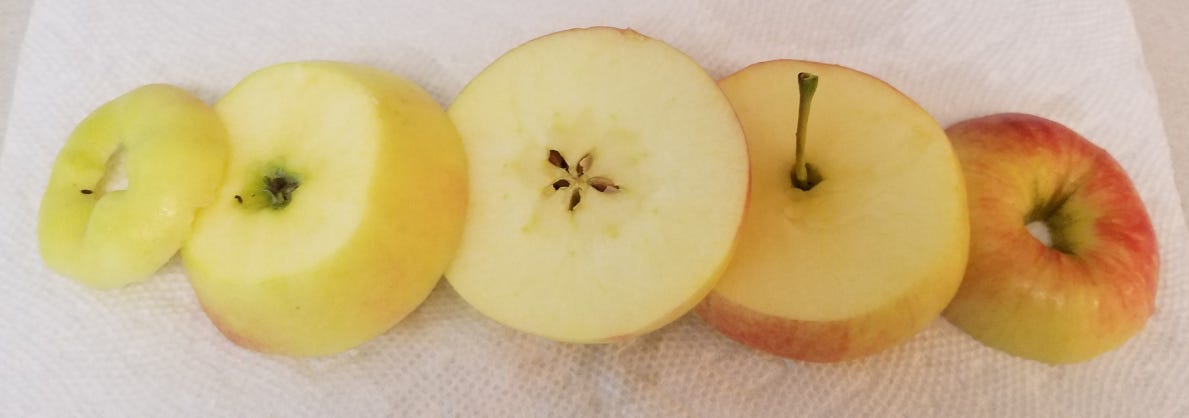Dive 9: How to eat an apple... and what it has to do with problem solving
Hey, it’s Alvin!
I recently went apple picking at a local farm with my parents. The apples were delicious rewards, but the apple picking itself was the best part. Having a sedentary job that keeps me indoors for 40+ hours per week means that simply going outside fills me with a curious amount of joy.
There’s nothing like a light fragrance of apples wafting through the crisp autumn breeze. Crouching under the branches of neighbouring apple trees, lunging across to the next row of trees in the apple orchard. Then, reaching up to twist off a rosy red apple near the top of a tree. Engaging my core muscles to keep my balance when I accidentally step on an apple on the ground. It’s an activity that offers fresh air and some exercise if you count stretches.
Before I knew it, a few hours had passed, and we scored a 10-pound bag of apples. And as I took a bite of a sweet, crisp, juicy Ambrosia, I remembered someone explaining that there’s no such thing as an apple core.
I’m not here to debate the definition of “core,” but they have a point. Most people I know snack on apples in a specific way because there are three non-fleshy parts we don’t like to eat:
There’s a cool animation on the life cycle of an apple that shows how the apple flower blossoms, then shrinks and wilts as the fruit grows behind it. But we tend to see the stem, the seeds, and the wilted blossom along a line or axis of the apple, and we eat in towards it, but not through it. Like corn on the cob.
But what I’d like to share with you today is that ALL the flesh is edible, and there’s a lot of wasted fruit if it’s not all eaten. In fact, some would say the entire apple can be eaten. I’m not gonna go that far. I’m not big on eating stems or seeds. I’m just focusing on the juicy parts. I want to show you how much goodness you might be missing out on with a demonstration. Check this out:
Here’s a refreshing, fragrant Ambrosia apple I picked a couple weeks ago, sitting on my kitchen counter:
I slice it into five sections, horizontally. The bottom slice of the apple is on the left side. The top’s on the right:
Then I pulled out the stem, picked out the seeds, and cut out the wilted flower on the bottom.
In the next picture, I stack the sweet, crisp slices on the right—all of which are edible. The only parts most of us will discard or compost is the stuff on the left.
The trick to all this is to eat it from top to bottom or bottom to top, rather than from the side. Of course, twist off the stem first, so it’s out of the way. And you can spit out the seeds and bite off the wilted blossom when you get to those parts if you don’t like them.
Finding this out was mind-blowing to me because, until then, I only ever saw people eating apples from the side. It never occurred to me that the so-called “apple core” was mostly edible. People just treated it like trash. But just look at how much more of the apple is wasted that way. I always feel fuller eating apples from top to bottom than from the side. To this day, it blows my mind how little I end up throwing away.
This wouldn’t be a “proper” dive Below the Surface if I didn’t share some sort of life lesson, so…
Today’s Lesson
Though it may be cliché, it’s true that the way we look at something affects how we think about and interact with it. I work as a software developer—a job that involves solving weird problems every day. And there are times I’ll get stuck. I’ll have no clue how to continue. But it’s almost always because I’m looking at it the “wrong” or “suboptimal” way.
Over the years, I learned that when I’m so stuck on a problem that I feel I can no longer continue, then it’s time to step away from it… temporarily. It’s time to immerse myself in something else and seek others with vastly different perspectives from me. Then, I have to open my mind to understand those perspectives. It’s not as much about accepting or liking those points of view as it is about understanding and respecting their pros and cons. It can be hard, but it has also consistently gotten me unstuck from problems.
For example, at the start of my career, I saw software development as nothing more than coding. A client asks for something, I’d code it, and move on to the next thing. But that point of view also brought a ton of frustration. There were so many tools to learn, which seemed to get in the way of delivering code. Why can’t there just be one tool, one language, and one (best) way to do something? “Life would be so much easier,” I thought.
Then, I found a blog that described software development as an “art.” It’s about creative problem solving. That blew my mind. Suddenly, everything made sense, and my frustrations evaporated. There are tons of tools because each has unique pros and cons that allow us to solve specific problems. It’s like how a painter has different types of paints and techniques available to achieve different effects.
The bottom line is sometimes we need someone with a different perspective to show us that apples can be eaten top-down to open our mind to greater possibilities.
Or, as King Bumi said in Avatar: The Last Airbender,
Instead of seeing what they want you to see, you got to open your brain to the possibilities.
Today’s Visual
I hope you enjoyed this dive Below the Surface on apples. Reply to belowthesurface@substack.com if you have questions or comments. Let me know how changing perspectives helped you solve problems, or if you have any tasty apple recipes. I’d love to hear from you.
Thank you for reading. Have a wonderful day. And I’ll see you in the next one.








